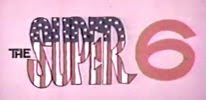Last week, Adam Chamberlain performed an act of televisual profiling by offering us a glimpse inside the mind of a serial killer with What the Killer Sees. This week, I am proud to introduce a companion to his bi-weekly column: Second Sight. Millennium lingers in the minds of its faithful viewers in part because it left us with many enduring enigmas, mysteries that are discussed and debated still today. Chief among these is the true nature of Frank Black’s extraordinary gift. Was our peerless forensic profiler employing a brilliant but purely intellectual deductive skill? Or was there something miraculous, something inconceivable, about his astonishing insights? Identifying connections as well as discrepancies, statistics as well as disputes, Back to Frank Black’s newest regular column is concerned with confronting these lingering questions. On alternating Fridays, episode-by-episode, Second Sight will endeavor to offer viewers a fresh perspective on Frank Black’s mysterious talents by investigating the inner eye of Millennium’s visionary hero...

“Pilot” (25 October 1996)
Writer: Chris Carter
Director: David Nutter
Editor: Stephen Mark
Quote: “I see what the killer sees... I put myself in his head. I become the thing we fear the most... I become capability. I become the horror, what we know we can become only in our heart of darkness. It’s my gift. It’s my curse. It’s why I retired.” --Frank Black

Overview: One of many stunning stylistic elements that separate Millennium from earlier crime dramas--indeed, one of the show’s trademark hooks--is to be found in the attempt to offer a distinctive visual representation of the hero’s deductive methods. “Pilot” takes full advantage of this device by offering us a string of gruesome, sometimes symbolic montages representing the unique vision of both the Frenchman and Frank Black. Whilst they often serve to illustrate the particulars of the crimes that have been committed, these visceral sequences are also undeniably surreal, immediately evoking the supernatural sensibilities already associated in the minds of the audience with creator Chris Carter.
As a result, the script for the episode goes out of its way to defend Frank’s so-called facility as purely intuitive or intellectual. In what is undoubtedly the show’s best-remembered monologue, our favorite criminal profiler emphatically insists that there is nothing psychic about his deductive feats. Carter has repeated this mandate on countless occasions. In his audio commentary for the episode, the show’s creator describes Frank Black as a man “who doesn’t necessarily have an in-born gift but something he has developed through his hard work with catching criminals, seeing how they operated, knowing them, and ultimately being able to see like them.” For the Millennium devotee, “psychic” is a dirty word.
From the very start, however, there exists an undercurrent of the miraculous that troubles our understanding of Frank Black’s extraordinary gift. At least two specific aspects of “Pilot” leave us wondering about the true extent of Frank’s mental talents. Firstly, there is his refusal to use his eyes as he repeatedly turns down opportunities to personally view the bodies of murder victims hidden by tarps or body bags. (It is this quirk that prompts a coroner to glibly dub our hero “the man with the x-ray eyes.”) Then there is the Frenchman, who, in the midst of his ravings, instinctively insists that he shares a sort of apocalyptic power with the retired lawman who has hunted him down: “You can see it, just like I do. You know the end is coming.” Should we simply shrug this off as a tirade from a murderous madman? Or is there something unusual, something unavoidable, about the implied prophetic connection between the two? Is there more to the hero’s gift than meets the eye? Millennium’s exceptional pilot episode, like so many of those installments that would follow, raises just as many questions regarding Frank Black’s gift as it seemingly answers.
Connections: The blood-and-fire visuals associated with the Frenchman’s point-of-view are inspired by evocative imagery to be found in “The Second Coming” (1920) by William Butler Yeats and the biblical Book of Revelation. Frank’s attempt to describe the precise nature of his abilities recalls “Heart of Darkness” (1902) by Joseph Conrad, a novella that explores the capacity for darkness inherent to the human heart. Whoever Fights Monsters (1992) by Robert K. Ressler and Mindhunter (1995) by John E. Douglas--both men who served as models for the character of Frank Black--offer insight regarding a factual approach to the psychological profiling of serial killers.
Trances in Total: 5 (0:20)
Gore Score: 9/10
Read more...
 These are the "Super Six"* TV topics that went through my mind during yesterday's "procedure".....
These are the "Super Six"* TV topics that went through my mind during yesterday's "procedure".....

















 That last news story was O'Bviously a reference to Earl Hickey, the main character from Greg Garcia's last TV show, 'My Name Is Earl'.
That last news story was O'Bviously a reference to Earl Hickey, the main character from Greg Garcia's last TV show, 'My Name Is Earl'.
 Yabba dabba doo!
Yabba dabba doo!















